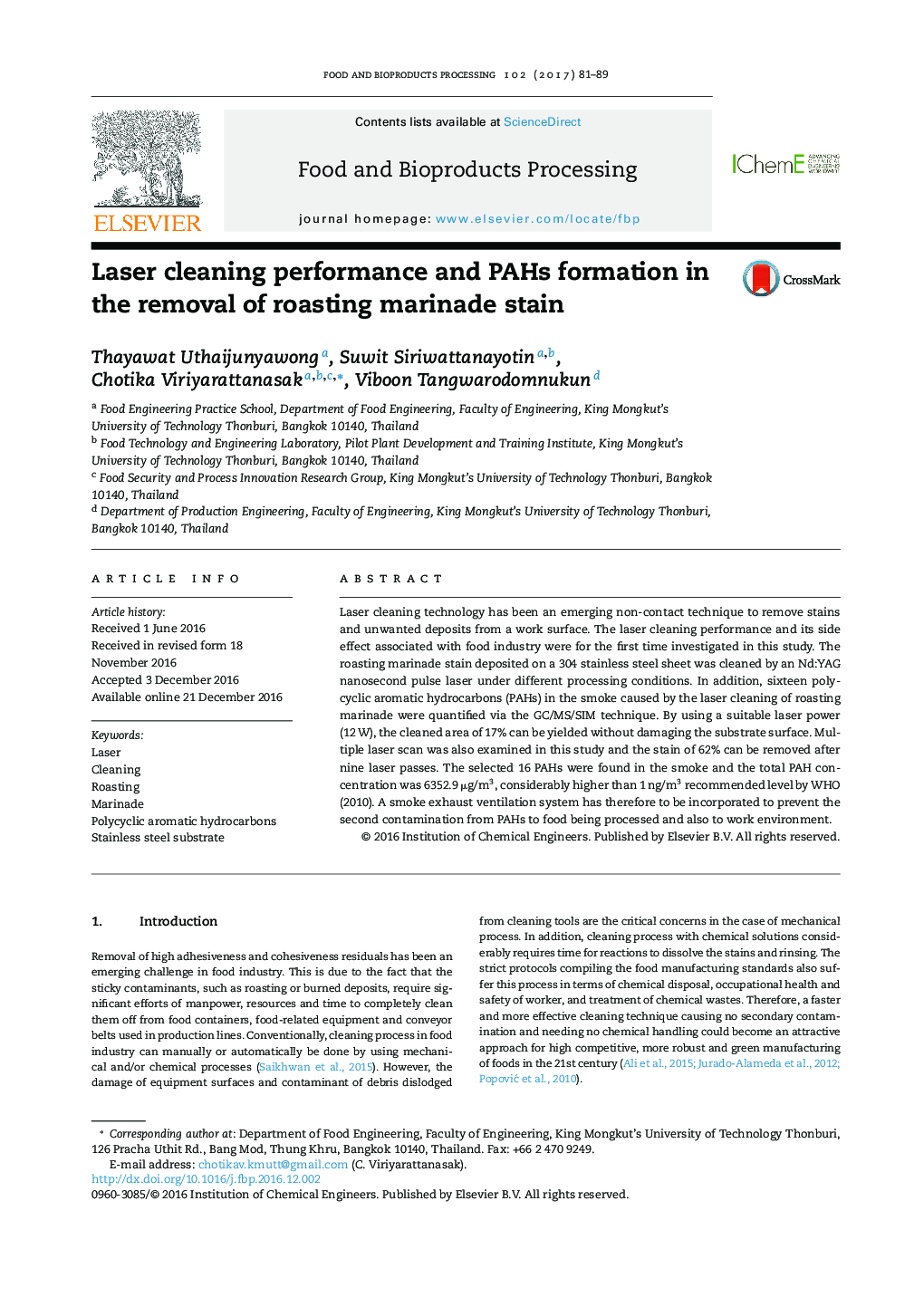| Article ID | Journal | Published Year | Pages | File Type |
|---|---|---|---|---|
| 4752952 | Food and Bioproducts Processing | 2017 | 9 Pages |
â¢We propose the potential use of laser cleaning process for food stain removal.â¢Though high laser power can promote the %removal, it can damage the substrate.â¢Multiple laser scan technique can be applied to increase the cleanness of substrate.â¢The 16 PAHs were found in the smoke, especially 2- and 3-ring PAHs contributing 86% of the total PAHs detected.â¢The total PAH concentration was 6352.9 μg/m3.
Laser cleaning technology has been an emerging non-contact technique to remove stains and unwanted deposits from a work surface. The laser cleaning performance and its side effect associated with food industry were for the first time investigated in this study. The roasting marinade stain deposited on a 304 stainless steel sheet was cleaned by an Nd:YAG nanosecond pulse laser under different processing conditions. In addition, sixteen polycyclic aromatic hydrocarbons (PAHs) in the smoke caused by the laser cleaning of roasting marinade were quantified via the GC/MS/SIM technique. By using a suitable laser power (12 W), the cleaned area of 17% can be yielded without damaging the substrate surface. Multiple laser scan was also examined in this study and the stain of 62% can be removed after nine laser passes. The selected 16 PAHs were found in the smoke and the total PAH concentration was 6352.9 μg/m3, considerably higher than 1 ng/m3 recommended level by WHO (2010). A smoke exhaust ventilation system has therefore to be incorporated to prevent the second contamination from PAHs to food being processed and also to work environment.
